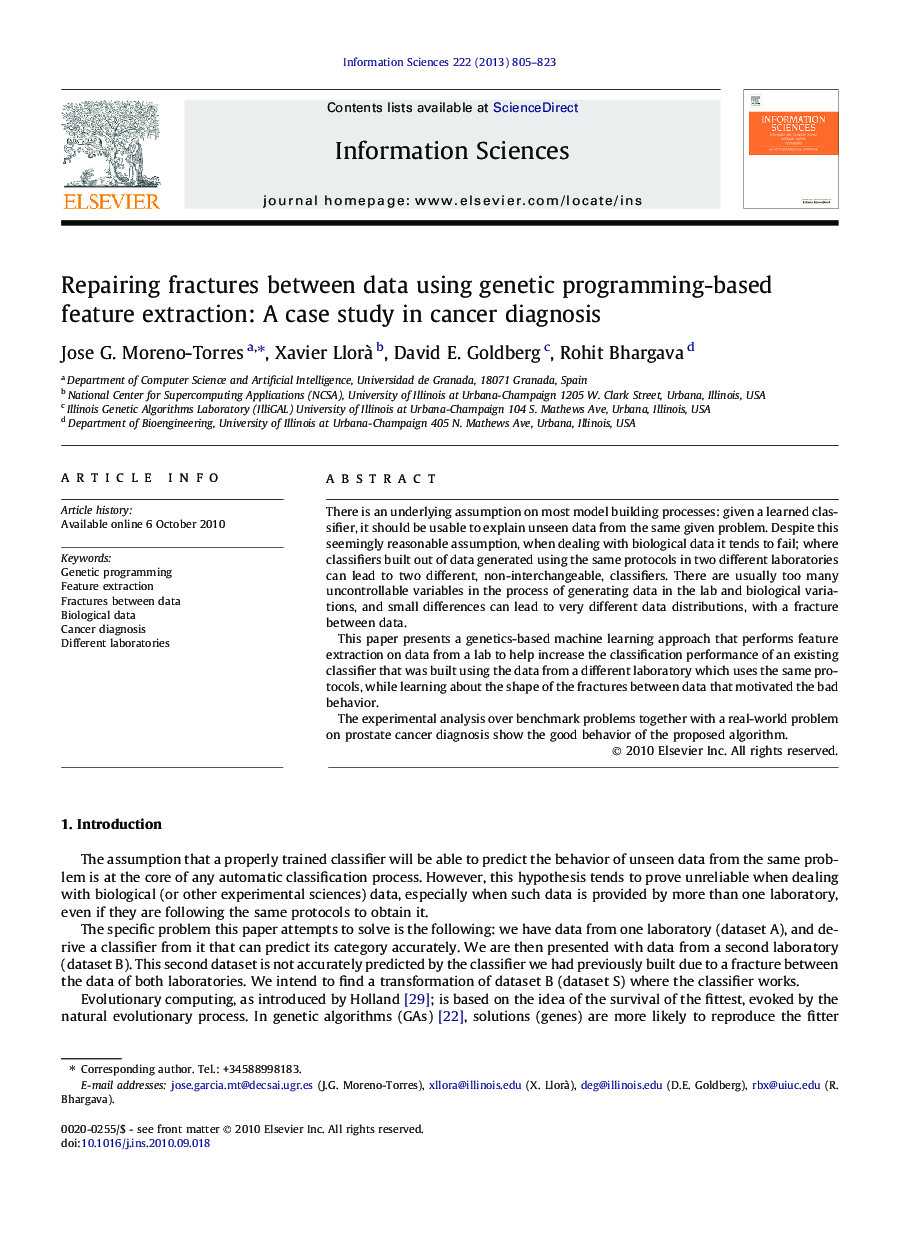| Article ID | Journal | Published Year | Pages | File Type |
|---|---|---|---|---|
| 394175 | Information Sciences | 2013 | 19 Pages |
There is an underlying assumption on most model building processes: given a learned classifier, it should be usable to explain unseen data from the same given problem. Despite this seemingly reasonable assumption, when dealing with biological data it tends to fail; where classifiers built out of data generated using the same protocols in two different laboratories can lead to two different, non-interchangeable, classifiers. There are usually too many uncontrollable variables in the process of generating data in the lab and biological variations, and small differences can lead to very different data distributions, with a fracture between data.This paper presents a genetics-based machine learning approach that performs feature extraction on data from a lab to help increase the classification performance of an existing classifier that was built using the data from a different laboratory which uses the same protocols, while learning about the shape of the fractures between data that motivated the bad behavior.The experimental analysis over benchmark problems together with a real-world problem on prostate cancer diagnosis show the good behavior of the proposed algorithm.
